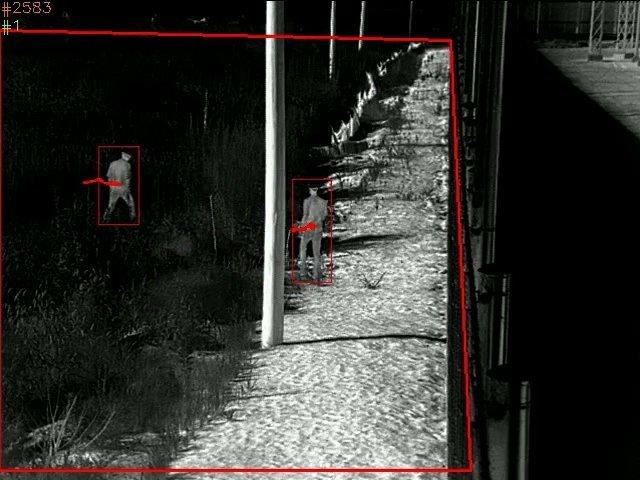Insights from the Field: How Thermal Cameras Safeguard Remote Substation Perimeters


Top pain points for remote substation security
The failure of a key substation caused by a security breach would have a debilitating effect for homeowners, businesses, and mission-critical infrastructure. While physical security is a top priority for utilities, designing, installing and operating a perimeter system requires skill. Remote location, limited network connectivity, minimal lighting, internal security audits, and compliance with North American Electric Reliability Corporation are some of the challenges that both substation security directors and system integrators face.
Thermal for your perimeter intrusion detection system (pids)
Since their arrival on the mainstream security scene a few decades ago, thermal security cameras have quickly become the optimal solution for remote substation perimeter security, due to their ability to monitor perimeters day and night in adverse weather conditions as well as in harsh environments.
Thermal cameras measure the minute differences in heat signatures emitted by objects and people to produce high-contrast images and reliable intrusion detection. They enable security personnel to detect an intruder before they ever reach the perimeter for early intervention.
As the industry leader in advanced thermal technology, FLIR provides the best sensor quality available. FLIR’s total security solution featuring a diverse suite of perimeter cameras offers the widest selection of lenses and detection ranges, adaptable to both large and small deployments. FLIR’s track record of success is just one of the reasons why utilities choose FLIR cameras time and again.
Design recommendations
When deploying thermal cameras at substations, there are several factors to consider to optimize performance. Here are some tips from our FLIR experts.
Identify What You Need to Protect: Assess your substation’s unique needs, define your threats, and determine which area you need to monitor. For rural or small substations miles away from the nearest city, position your cameras so you have a solid view of the outside perimeter. If anyone approaches, you want to have ample warning. For substations in urban areas that are next to public lands and walkways, it may not be cost-effective to “look out” as pedestrians can easily generate nuisance alerts. In these scenarios, thermal cameras that surveil the interior of the substation may be the better option.
Make the Most of Existing Infrastructure: Thermal cameras must be mounted at a minimum of 12-15 feet above the ground. However, some substation fences are only 6-8 feet tall. In this case, consider mounting cameras on telephone poles or tower structures. Utilizing these existing structures instead of digging new trenches can save you both time and money.
Select the right Camera for your Application: For small substations that are less than an acre, deploying a couple of FLIR Elara™ FC-Series ID cameras, which feature onboard analytics, along the fence line will often do the trick. For short to mid-range needs, the FLIR Elara FB-Series is a great, economical option. Install a visible camera or a camera that provides both thermal and optical imagers, like FLIR Saros™ DH-390 Dome at the gate, to monitor general traffic. For larger substations (around two acres) that are highvalue sites, consider deploying a mix of FLIR FC-Series ID cameras with the FLIR Saros™ DM-Series to cover the fence line. Additionally, mount a pan-tilt camera with both visible and thermal streams, such as the FLIR Elara™ DX-Series or FLIR Triton™ PT-Series, to look around the perimeter for superior monitoring and threat assessment.
As a final consideration, choose the right software to streamline management, operations, and functionality. For large applications where customers need to manage surveillance, access control, radar, and other disparate systems on one platform, consider command and control software. For enterprise-level surveillance operations, a video management system is optimal and for small applications using just a few cameras, a network video recorder is sufficient. Regardless of the size of the project, partner with an expert team that can help assess, design, install, and program the right system for your application.
For more resources to help you design your system, check out our electric utility web page.
Founded in 1978, FLIR Systems is a world-leading industrial technology company focused on intelligent sensing solutions for defense, industrial, and commercial applications. FLIR Systems‘ vision is to be "The World’s Sixth Sense, creating technologies to help professionals make more informed decisions that save lives and livelihoods. For more information, please visit www.flir.com and follow @flir.
Teledyne FLIR
Schwieberdinger Straße 60
71636 Ludwigsburg
Telefon: +49 (7141) 488817-0
Telefax: +49 (7141) 488817-99
http://www.flir.de/MV
![]()